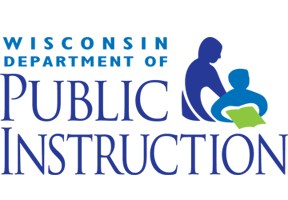Every single week (multiple times each week, actually) I am reminded that I am a struggling reader. Scratch that. I'm not just a struggling reader; it's more than that. I'm a struggling learner.
The reading assignments for class go something like this:
Step 1. When I can't possibly delay the reading assignment any longer, I create the perfect conditions for reading. This usually involves a food-related incentive schedule and lots of self-talk ("If I read two pages, I can have a square of chocolate" or "I will treat myself to an afternoon at a coffee shop and a whole milk latte while I read this assignment.")
Step 2. Read two paragraphs and declare that I cannot possibly do this. Go on the internet to review the drop deadline for the course. Remember that I can't drop the course without significant consequences for my checkbook and transcript. Chastise myself for immediately wanting to give up. Remind myself that I'm not a quitter. This step is generally repeated multiple times throughout the reading process.
Step 3. Get serious about reading the assignment. I've noticed this involves a few strategies:
- Skip many, many words, sentences, and paragraphs while looking for sentences with words (instead of numbers and other symbols) that have main ideas. Underline these even if I don't understand them.
- Keep a list of terms and symbols that I don't understand. Sometimes I Google these right away; sometimes I just write them down. It depends on how frustrated I am.
- Resign myself to not understanding much of the text. Be okay with that.
- Text a friend. Sometimes to bemoan how awful the reading is - sometimes to ask a question. I've even texted pictures of the text to my own personal mathematics coach.
Step 4. Do some work after reading. This usually involves that personal mathematics coach I mentioned earlier. I see him and immediately teach him anything I managed to understand from the reading. He gives me real-life examples and clarifies.
Step 5. Reflect on what would have helped me be successful with the reading assignments. I realized that I really need:
- Vocabulary lessons. It's all Greek. Seriously. Greek. I don't know what to call any of the symbols (I make up names for them based on what they look like). There isn't a glossary in any of the texts. And that's just the symbols. There are also lots of real words. I don't understand those either.
- Learning targets. When text is difficult, I need some statements to tell me what I'm supposed to know, understand, and be able to do after I read. I don't just need targets for each text; I need targets for the course, too. I have no idea what the big ideas are and no clue how they fit together.
- Discussion. Time to talk. Collaborative conversation. I don't need a protocol or a role sheet or teacher-provided text-dependent questions. I just need some time to talk to my peers, hopefully, peers that are knowledgeable about the topic.
Despite the fact that I'm a smart and capable person, I'm a struggling learner in this environment, this context.
This experience has reminded me that I don't struggle very often. In fact, I've realized I struggle so little that I don't even know how to do it! I haven't mastered much (or really any!) content of the course, but I've learned a lot about who I am as a reader and learner.
And, for this reason, I encourage you to struggle. Find a really difficult concept you know nothing about it and study it - not just for a couple of sentences or a quick Google search, really study it. Notice what you do to understand. Notice what supports would have been helpful to you. Notice how you feel. Then, change something - something about yourself or something about how you work with students or adults - because of your experience.





